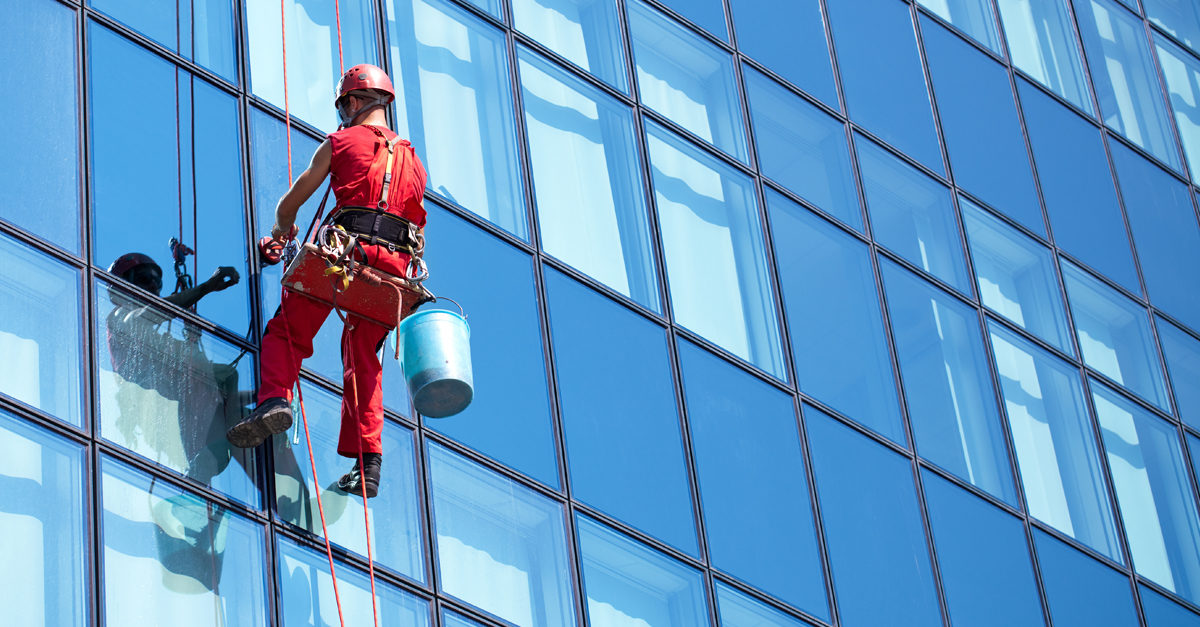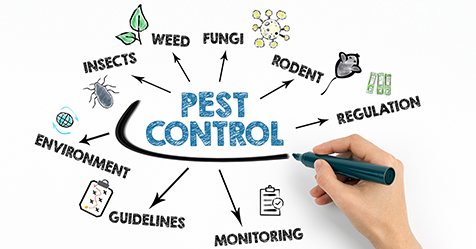There is a new standard in place when it comes to workplace safety, specifically for those who are exposed to certain safety hazards at commercial buildings on a regular basis. It is called “Prevention through Design,” highlighted by the recently published American National Standard.
The “Prevention through Design Guidelines for Addressing Occupational Hazards and Risks in Design and Redesign Process” provides guidance on how to include prevention methods through design concepts “within an occupational safety and health management system.” Introduced in 2011 as ANSI/ASSE Z5903-2011, the standard is intended to complement existing safety practices and procedures.
With this in mind, the most important step a professional window cleaner can take before each shift is to plan ahead. Planning prevents accidents, and failing to plan means planning to fail.
While developing a written work plan, a professional window cleaning contractor will need to incorporate several elements to prevent accident or injury while on the job: equipment, training, and site assessment. These elements are important to note if your business currently provides window cleaning services or is exploring the possibility of offering them.
Element One: Equipment
The first element—equipment—involves the components that you, as the contractor, will bring to a site to properly and safely perform window cleaning services.
The early part of the year often finds many window cleaning companies in a sluggish, if not inactive, state of operations in certain parts of the country. While some companies that work in climates where it is warm year-round are still at it, it’s still not as busy as spring and fall.
This downtime is the perfect time to do in-house inventory and equipment inspection. Additionally, this is one method for practicing Prevention through Design, because now you’re planning for the upcoming busy season by ensuring you have equipment that is in safe working condition and meets codes and standards.
This is also the perfect time to start getting ready for the upcoming spring busy season. It will be here before you know it, and once it arrives, there is little time to slow operations by taking equipment out of service for repairs. Now is the time to check all your basic tools, extension and water-fed poles, hoses, and ladders for wear and tear.
If you’re inspecting equipment during this time, make sure its condition is dated and logged. In this digital age, it’s a good idea to enter inspection sheets electronically and include pictures of the equipment you’re inspecting. Good record-keeping will seriously improve your designs for preventing mishaps.
For contractors who specialize in high-rise buildings, the off months provide a good opportunity to take inventory on the equipment you have and will need for the rush of spring cleaning, such as rope, cables, d-rings, work platforms, seat boards, and other accessories. Don’t hope some of your equipment will get you through if it looks worn or is in need of repair. Make sure you’ll have enough danger signs and barricades, and don’t forget about rope and suspended line protectors. You can never have too many of those for your teams.
Element Two: Training
The next element in a safety program is training. You’ve inspected and ensured your equipment is in safe working condition, so now you need to make sure your workers are going to use it correctly.
Again, operationally slow times can be utilized to gather and organize training materials. The International Window Cleaning Association (IWCA) and U.S. Occupational Safety and Health Administration (OSHA) have a working alliance, and many of their resources are available online. Additionally, the IWCA has numerous documents that can be downloaded and used for company training and monthly safety meetings.
Element Three: Site Assessments
Finally, the most important element to help prevent accidents or injuries is a site assessment with written work plans for each of your buildings where a professional contractor may perform services.
Site assessments are accomplished by visiting each location where you or your crews will work to identify what hazards they may encounter and how to avoid them. Again, use the slow season to your advantage, and visit all of your contracted worksites. The number of hazards that a professional window cleaner encounters at a typical site is less than one dozen, but each has a level of concern that must be properly addressed.
The following list includes most of the hazards any professional window cleaner may encounter at any site, no matter what type of work they are performing:
- Falling
- Environment (weather)
- Equipment condition
- Ground obstacles
- Overhead obstacles
- Suspension rigging and anchor points
- Electric supply lines
- General public.
Performing a site assessment and developing a written work plan to address any hazards is a requirement of OSHA and also known as a Job Hazard Assessment (or JHA for short). The written work plan is a great offense and can help provide a means of site supervision during the busy season when you can’t be at every job, and of course, it’s the most obvious example of Prevention through Design.
The Impact of Prevention through Design
Coming up with a plan for equipment maintenance, training, and conducting site assessments has a proven track record for the industry. During the last two decades, contractors have performed site assessments and received cutting-edge training, and it has made a difference.
An American National Standard, the I-14.1, which was originally published and approved in 2001, helped to initiate this change for the better, as it acted as a guideline for window cleaners in the industry to follow. As a result, accidents and fatalities were reduced by more than 30 percent, and they continue to be prevented when a proper site assessment, training, equipment inspection, and work plan are provided.



